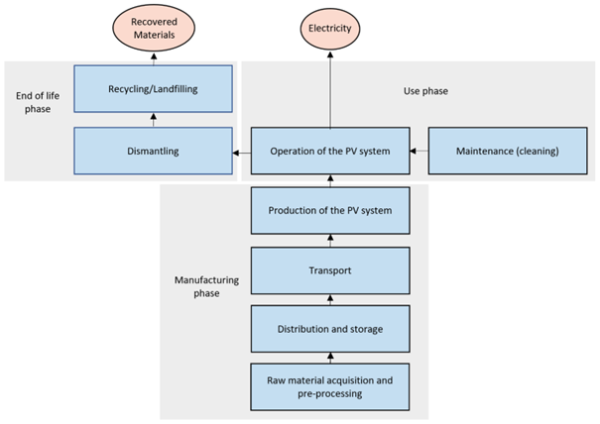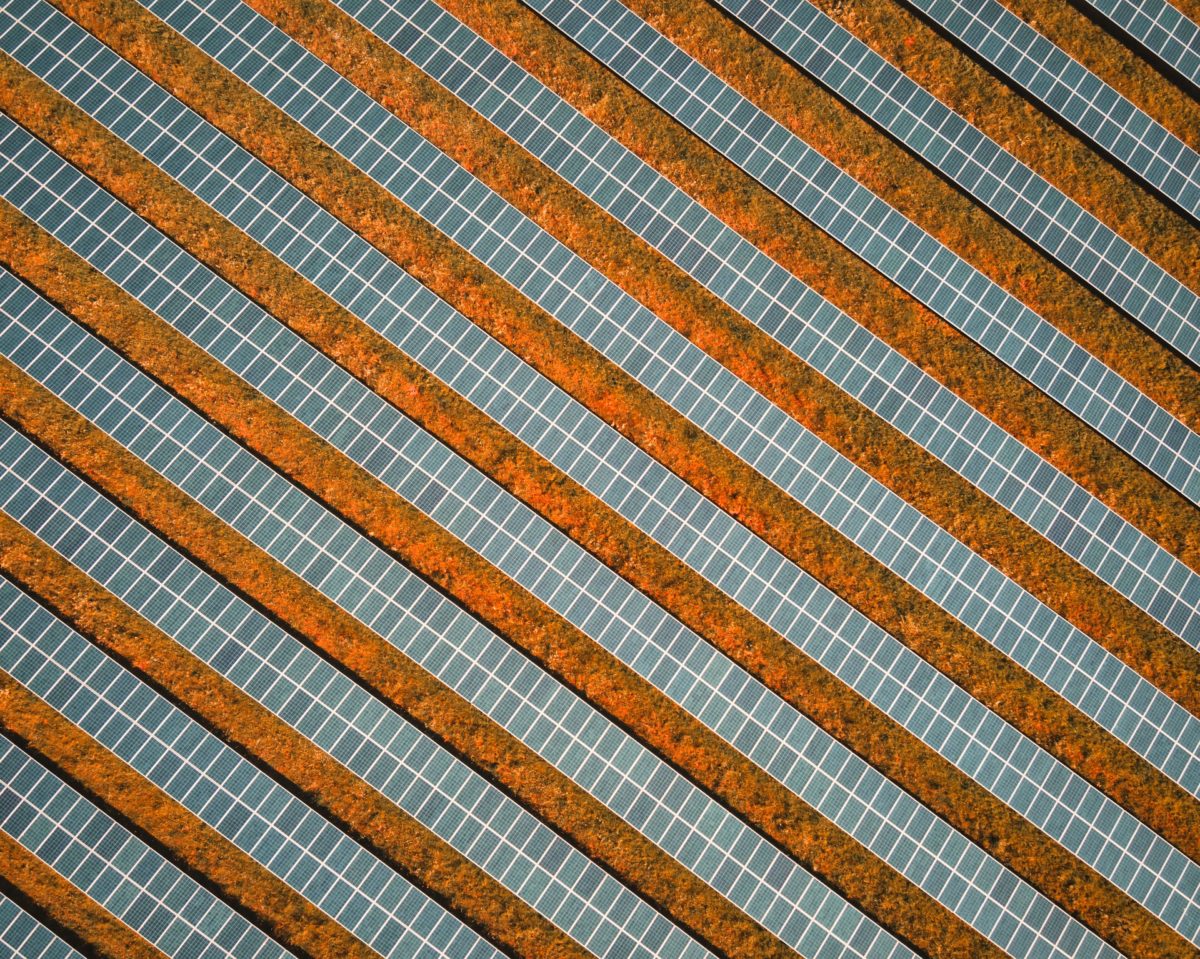As photovoltaics have become an increasingly important contributor to the global electricity system over the past decades, questions have been asked about the environmental sustainability performance of this technology. To reduce climate change and protect the environment, the transition from fossil-based energy to renewable energy systems is urgently needed. Policymakers, industry sectors and the general public want to see proof that photovoltaic technology really is an environmentally superior option.
In the very early years of photovoltaic technology development, when manufacturing processes were less sophisticated and device efficiencies were lower, the environmental performance was less impressive than it is today. Circulation of misinformation has sometimes resulted in a perceived lack of clarity about the environmental benefits of photovoltaic systems. The experts of IEA PVPS Task 12 are working to provide detailed and reliable assessments of the environmental performance of photovoltaic technologies through LCA. The goal of this activity is to increase the social acceptance of PV by making accurate information accessible for all.
Life-cycle assessments
Task 12, as part of the International Energy Agency’s Photovoltaic Power Systems Programme (IEA-PVPS), is a global leader in solar LCA. It maintains method guidelines, life-cycle inventory databases, and a fact sheet series that tracks changes in environmental performance of PV over time.
LCA is a comprehensive and transparent framework to study the environmental impacts of products and systems over their full life cycle. LCA studies are designed to quantify the environmental impacts of such products and they can enable fair and transparent comparisons amongst technologies producing the same product – in this case, generation of electricity. Task 12 uses LCA to study the environmental impacts of PV systems and applies LCA over time to track trends in its environmental performance. Task 12 LCAs quantify material and energy flows and their associated emissions from the full life cycle of PV systems, including
- Manufacturing: resource extraction, raw material production, wafer, cell and panel production
- Transport: distribution and storage
- Installation: mounting and cabling
- Use: over a 30 year period of operation and maintenance
- End of life: dismantling, recycling, waste management.

LCA updates
In 2020, Task 12 LCA experts published the third edition of the “Life Cycle Inventories and Life Cycle Assessments of Photovoltaic Systems” report. They put great effort into gathering and compiling data, including detailed inputs and outputs during manufacturing of cells, wafers, modules, and balance-of-system components (i.e., structural and electrical). This data was estimated from actual production lines and operating facilities. Furthermore, the report presents data to enable analyses of various types of PV installations; these included operational data of rooftop and ground-mount PV systems and country-specific PV-mixes.
A revised fact sheet has been published, with updated data from the previous LCI report, focusing on the progress achieved in reducing the environmental impact of PV systems, as well as the non-renewable energy payback time.
The scope of the study represents an average small scale residential PV system located in central Europe and it includes four PV module technologies:
Popular content
- Cadmium-Telluride (CdTe)
- Copper-Indium-Gallium-Selenide (CIS/CIGS)
- Multi crystalline Silicon (multi-Si, BSF)
- Mono crystalline Silicon (mono-Si BSF)
At first, a closer look was taken at the life-cycle greenhouse gas (GHG) emissions, as they are of particular interest for decision makers. The researchers found that life cycle GHG emissions for PV technologies are about 45 g CO2eq per kWh generated or below (CdTe at around 25 g). This is orders of magnitude below fossil fuel generators, which can emit up to 1 kg (or, 1,000 grams) of CO2eq per kWh, as shown in this study.
An example of changes of GHG emissions from the electricity produced by a rooftop residential PV system in Switzerland, using the mono-crystalline technology, clearly shows how GHG emissions from the electricity generated has been reduced significantly from 121 g CO2 eq/kWh in 1996 to 43 g CO2 eq/kWh in 2021. There are two key reasons for this decrease; firstly, the average efficiency of crystalline silicon (c-Si) panels increased significantly at the same time from 13.6 % in 1996 to 20.0 % in 2021, and secondly, the PV industry reduced its material footprint, producing more efficient solar cells with less materials and waste.
Task 12 experts also compared the environmental impacts of 2021 PV systems to 2018 systems, based on the updated LCI data. After significant reductions in environmental impacts in the last update (2018 systems compared to previous ones), the changes in specific environmental impacts this time were relatively small, but there is still great potential for future improvements. By focusing on the supply-chain of c-Si modules, e.g. using renewable energies for the ingot manufacturing processes, the industry could further reduce the environmental impacts of PV systems.
Finally, the non-renewable energy payback time was examined, which is defined as the period required for a renewable energy system to generate the same amount of energy (in terms of non-renewable primary energy equivalent) that was used to produce the system itself. Yield optimally installed in Central Europe, all PV technologies examined in the study achieve a payback time of around 1 year (with CdTe only 0.9 years).
It is important for decision makers to be equipped with this clear and accurate information about the environmental performance of photovoltaic technologies and about the key factors such as annual yield influencing the environmental performance. IEA-PVPS Task 12 will continue to publish regular updates of its LCI data for photovoltaic systems so that the further progress can be tracked over time. Giving consumers higher confidence in the technology and its appropriate utilisation can help to increase social acceptance of PV as its role in energy markets grows.
This is the second article of a new monthly column by the IEA-PVPS program. This article was contributed by IEA PVPS Task 12 – PV Sustainability Activities. Further information on the life-cycle assessment of PV can be found in Task 12’s recent Factsheet: Environmental LCA of electricity from PV systems (2022 update).
By Rolf Frischknecht, Garvin Heath, Jose Bilbao, and Bettina Sauer
The views and opinions expressed in this article are the author’s own, and do not necessarily reflect those held by pv magazine.
This content is protected by copyright and may not be reused. If you want to cooperate with us and would like to reuse some of our content, please contact: editors@pv-magazine.com.


3 comments
By submitting this form you agree to pv magazine using your data for the purposes of publishing your comment.
Your personal data will only be disclosed or otherwise transmitted to third parties for the purposes of spam filtering or if this is necessary for technical maintenance of the website. Any other transfer to third parties will not take place unless this is justified on the basis of applicable data protection regulations or if pv magazine is legally obliged to do so.
You may revoke this consent at any time with effect for the future, in which case your personal data will be deleted immediately. Otherwise, your data will be deleted if pv magazine has processed your request or the purpose of data storage is fulfilled.
Further information on data privacy can be found in our Data Protection Policy.